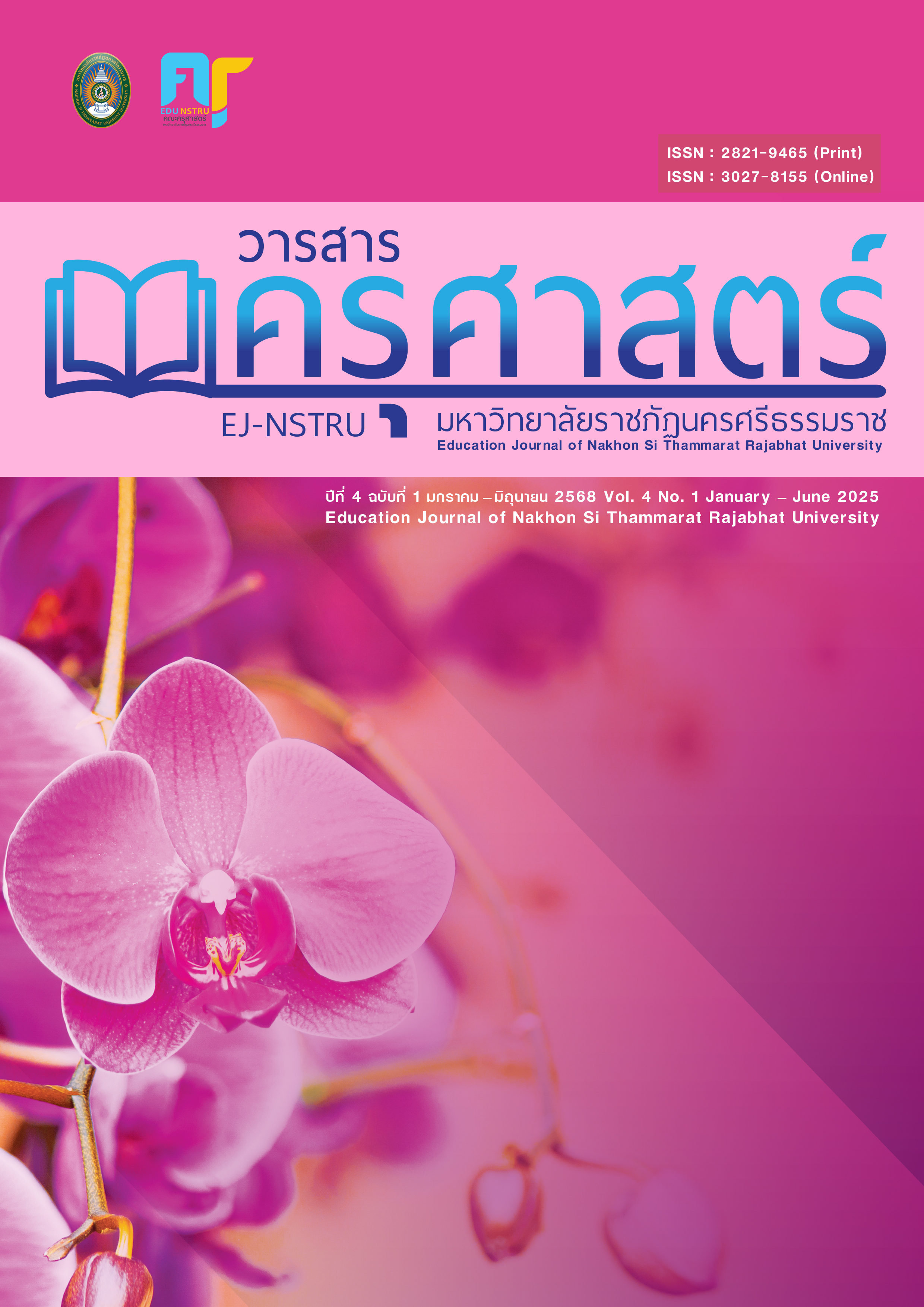Evaluation of the School-Based Curriculum in the Thai Language Learning Area at Kaengkhorwittaya School, B.E. 2561, Using the CIPP Model
Main Article Content
Abstract
The purpose of this research was to evaluate the curriculum of the Thai language learning area at Kaengkhro Witthaya School, Academic Year 2018, using the CIPP model,which consists of four areas Context, Input, Process, and Product. The participants included the school administrators, Thai language teachers, and students, totaling 338 people. The research instruments included questionnaires, interviews, and data recording forms, with consistency indices ranging from 0.67 to 1.00. Data were analyzed using frequency, percentage, mean, standard deviation, and content analysis. The results of the study showed 1)Context The curriculum was highly suitable, with a mean of 4.98 and a standard deviation of 0.06. The curriculum aligned with the school’s vision and context, and was developed systematically based on the needs of students, parents, and the community. 2)Input The input factors were highly suitable, with a mean of 4.97 and a standard deviation of 0.12. Teachers and staff had the necessary qualifications for their subjects, and the budget allocation was sufficient. The school also had modern learning resources. 3)Process The process was highly suitable, with a mean of 4.92 and a standard deviation of 0.30. Teachers used various methods for teaching and assessment, and there was continuous monitoring of students' learning progress. 4)Product Students had satisfactory academic performance, with an evaluation result of 81.81%. The results of the O-NET test for Thai language in Grade 9 showed an average score of 58.36% and in Grade 12, an average score of 47.66%. The evaluation of reading, critical thinking, and writing skills was 100%, and the evaluation of desired student attributes also scored 100%, meeting the established criteria.
Article Details

This work is licensed under a Creative Commons Attribution-NonCommercial-NoDerivatives 4.0 International License.
บทความที่ได้รับการตีพิมพ์เป็นลิขสิทธิ์ของวารสารครุศาตร์ มหาวิทยาลัยราชภัฏนครศรีธรราช
ข้อความที่ปรากฏในบทความแต่ละเรื่องในวารสารวิชาการเล่มนี้เป็นความคิดเห็นส่วนตัวของผู้เขียนแต่ละท่านไม่เกี่ยวข้องกับวารสารครุศาสตร์ มหาวิทยาลัยราชภัฏนครศรีธรรมราช
References
Kaengkhro Witthaya School. (2018). Thai Language Learning Group Curriculum at Kaengkhro Witthaya School. Chaiyaphum.
Krejcie, R. V., & Morgan, D. W. (1970). Determining sample size for research activities. Educational and Psychological Measurement, 30(3), 607–610.
Noinuay, P., Rattanapanya, S., & Diskum, S. (2023). An Evaluation of the School Based Curriculum of Suankularb Wittayalai Thonburi Using the CIPP Model. Academic MCU Buriram Journal, 8(2), 1–13. Retrieved from https://so06.tci-thaijo.org/index.php/ambj/article/view/262409 (in Thai)
Noimai, I. (2019). AN EVALUATION OF PIBOONBUMPEN DEMONSTRATION SCHOOL, BURAPHA UNIVERSITY CURRICULUM: ENGLISH AND MATHEMATICS PROGRAM. Journal of Education and Innovation, 23(3), 382–394. Retrieved from https://so06.tci-thaijo.org/index.php/edujournal_nu/article/view/160653 (in Thai)
Ministry of Education. (2009). The Basic Education Core Curriculum B.E. 2551. Bangkok: Cooperative Assembly of Thai Agricultural Publishing Limited.
Sae-Lee, S. (2015). Evaluation of the Teacher Returning to Students Project Using the CIPP Model in Primary Educational Service Area Office, Kanchanaburi Area 3 (Master’s thesis). Kanchanaburi: Kanchanaburi Rajabhat University. (in Thai)
Stufflebeam, D. L., & Shinkfield, A. J. (2007). Evaluation theory, models, and applications. San Francisco, CA: Jossey-Bass.
Tomjan, B., & Srijumnong, J. (2018). An Evaluation of the School-Based Curriculum in Career and Technology of Banhouyboseun School under Loei Primary Educational Service Area Office 1. Ubon Ratchathani Journal of Research and Evaluation, 7(2), 59–68. Retrieved from https://so06.tci-thaijo.org/index.php/ubonreseva/article/view/153270 (in Thai)

